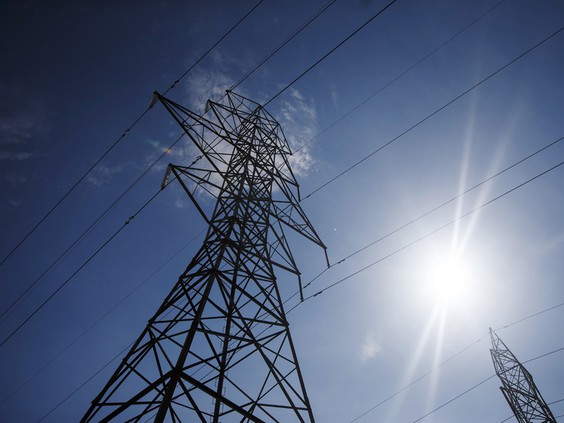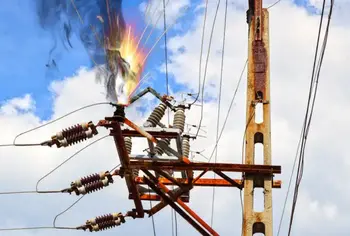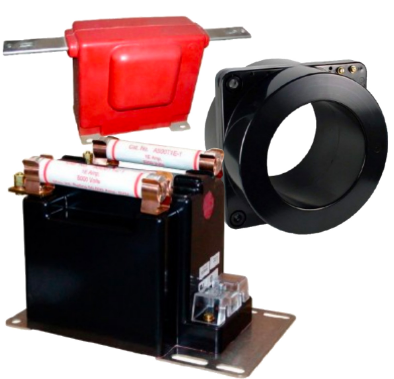Apparent Power Formula: Definition, Calculation, and Examples
By R.W. Hurst, Editor
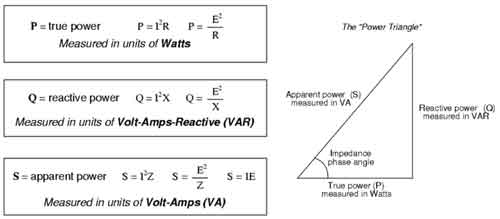
Grounding and Bonding and The NEC - Section 250
Our customized live online or in‑person group training can be delivered to your staff at your location.
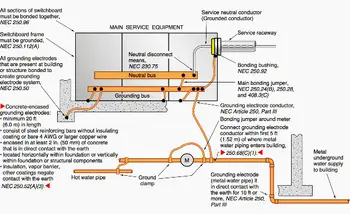
- Live Online
- 12 hours Instructor-led
- Group Training Available
Download Our OSHA 3875 Fact Sheet – Electrical PPE for Power Industry Workers

- Follow rules for rubber gloves, arc-rated PPE, and inspection procedures
- Learn employer obligations for testing, certification, and training
- Protect workers from arc flash and electrical shock injuries
Apparent power formula is important for calculating Apparent Power (AP) in AC circuits that represent the total power consumed by a circuit, including both the real and reactive power. The formula for calculating AP is S = V x I, where S is the AP in VA, V is the rms voltage in volts, and I is the rms current in amperes.
The power factor measures how effectively the circuit uses the power supplied and is expressed as a decimal or a percentage. The power factor (PF) affects the calculation of AP, as a high PF means that the circuit uses most of the power supplied to it to do useful work. In contrast, a low PF indicates that a significant portion of the power is being wasted due to reactive components.
Power Quality Analysis Training
Request a Free Power Quality Training Quotation
To calculate the total power a circuit consumes, you need to measure the rms voltage and current and use the apparent power formula. Other formulas related to AP include the reactive power formula, the complex power formula, the power factor formula, the volt-amperes formula, the AC power formula, and the electrical power formula. By understanding these formulas, you can analyze and optimize the performance of electrical systems and reduce energy costs and power quality issues.
What is Apparent Power?
AP is the total power that an AC circuit consumes, both the real power (RP) used to do useful work and the reactive power required to maintain the voltage and current phase relationship. AP is measured in volt-amperes (VA) and is calculated as the product of the root-mean-square (RMS) voltage and current in an AC circuit. The formula for calculating apparent power is:
Sign Up for Electricity Forum’s Power Quality Newsletter
Stay informed with our FREE Power Quality Newsletter — get the latest news, breakthrough technologies, and expert insights, delivered straight to your inbox.
AP = Voltage × Current
or
S = V x I
where S is the AP in VA, V is the rms voltage in volts, and I is the rms current in amperes.
AP is called "apparent" because it is not the actual power used by the circuit. Instead, it is a measure of the total power that is required to run the circuit, including the power that is lost due to reactive components like capacitors and inductors.
What is the difference between RP and AP?
RP, also known as active power or true power, is the power that is used to do useful work in a circuit, such as powering a motor, heating a room, or lighting a bulb. RP is measured in watts (W) and is the part of the AP that is in phase with the voltage. The formula gives real power:
Real Power = Voltage × Current × cos φ
or
P = V x I x cos φ
Where P is the RP in watts, φ is the phase angle between the voltage and current waveforms, and cos φ is the PF.
PF is a measure of how effectively the circuit uses the power that is supplied to it. It is the ratio of the RP to the AP and is expressed as a decimal or a percentage. A high PF means that the circuit uses most of the power supplied to it to do useful work. In contrast, a low PF indicates that a significant portion of the power is being wasted due to reactive components.
Reactive power, on the other hand, is the power that is required to maintain the voltage and current phase relationship in a circuit but needs to do more useful work. Reactive power is measured in volt-amperes reactive (VAR) and is given by the formula:
Reactive Power = Voltage × Current × sin φ
or
Q = V x I x sin φ
Where Q is the reactive power in VAR. Reactive power is necessary to maintain the magnetic and electric fields in the circuit and is stored and released by capacitors and inductors.
What is the unit of measurement for apparent power?
The unit of measurement for AP is volt-amperes (VA), which is the product of the rms voltage and current in an AC circuit. VA represents the total power required to run the circuit, including the RP used for useful work and the reactive power required to maintain the voltage and current phase relationship.
How does the PF affect the calculation?
PF affects the apparent power calculation because the total power a circuit consumes is the sum of the real and reactive power. Therefore, the AP is the hypotenuse of the power triangle, where the RP is the adjacent side and the reactive power is the opposite side. Therefore, the PF is the ratio of the adjacent side to the hypotenuse of the power triangle, as shown below:
As the PF approaches 1, the circuit becomes more efficient and uses less reactive power to maintain the voltage and current phase relationship. This reduces the AP and the overall power consumption of the circuit. On the other hand, a low PF means that the circuit consumes more apparent power than necessary, leading to increased energy costs, reduced efficiency, and other power quality issues. Therefore, it is important to measure and improve the PF of electrical systems, especially in commercial and industrial applications where the power demand is high.
FREE EF Electrical Training Catalog
Download our FREE Electrical Training Catalog and explore a full range of expert-led electrical training courses.

- Live online and in-person courses available
- Real-time instruction with Q&A from industry experts
- Flexible scheduling for your convenience
How do you calculate apparent power in a circuit?
To calculate the APin a circuit, you need to measure the rms voltage and current and multiply them together. The RMS voltage and current can be measured using a digital multimeter or a power analyzer. The RMS value accounts for the AC waveform, which is not constant like DC. Once you have the voltage and current RMS values, you can use the apparent power formula to calculate the total power consumed by the circuit, including both the real and reactive power.
What is the formula for calculating apparent power?
The formula for calculating apparent power is:
AP = Voltage × Current
or
S = V x I
Where S is the AP in VA, V is the rms voltage in volts, and I is the rms current in amperes. This formula gives the total power consumed by the circuit, including the power used to do useful work and the power required to maintain the voltage and current phase relationship.
Reactive Power Formula
The formula for calculating reactive power is:
Reactive Power = Voltage × Current × sin φ
or
Q = V x I x sin φ
Where Q is the reactive power in VAR, V is the rms voltage in volts, I is the rms current in amperes, and φ is the phase angle between the voltage and current waveforms. Reactive power is necessary to maintain the circuit's voltage and current phase relationship but does not do any useful work.
Complex Power Formula
The formula for calculating complex power is:
Complex Power = Real Power + j × Reactive Power
or
S = P + jQ
Where S is the complex power in VA, P is the RP in watts, Q is the reactive power in VAR, and j is the imaginary unit (√-1). Complex power is a mathematical concept representing the combination of real and reactive power in a circuit. The real power is the horizontal component, and the reactive power is the vertical component.
Power Factor Formula
The formula for calculating power factor is:
Power Factor = Real Power / Apparent Power
or
PF = P / S
Where PF is the power factor, P is the RP in watts, and S is the AP in VA. The PF measures how effectively the circuit uses the power supplied and is expressed as a decimal or a percentage.
Volt-Amperes Formula
The formula for calculating volt-amperes is:
Volt-Amperes = Voltage × Current
or
VA = V x I
Where VA is the AP in volt-amperes, V is the rms voltage in volts, and I is the rms current in amperes. Volt-amperes is the unit of measurement for AP, which is the total power an AC circuit consumes, including both the real and reactive power.
AC Power Formula
The formula for calculating AC power is:
AC Power = Voltage × Current × cos φ
or
P = V x I x cos φ
Where P is the RP in watts, V is the rms voltage in volts, I is the rms current in amperes, and φ is the phase angle between the voltage and current waveforms. AC power is used to do useful work in a circuit, such as powering a motor, heating a room, or lighting a bulb.
Electrical Power Formula
The formula for calculating electrical power is:
Electrical Power = Voltage × Current
or
P = V x I
Where P is the RP in watts, V is the voltage in volts, and I is the current in amperes. Electrical power is the rate at which energy is transferred in an electrical circuit and is measured in watts.





